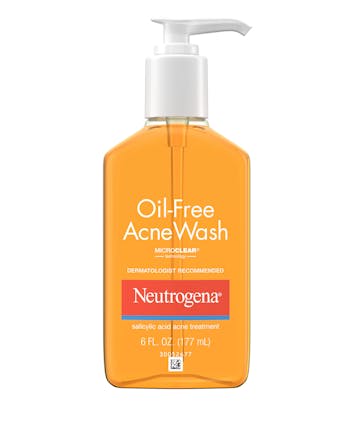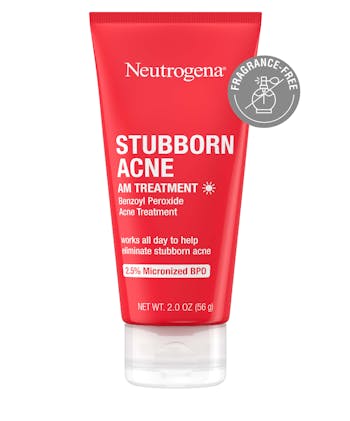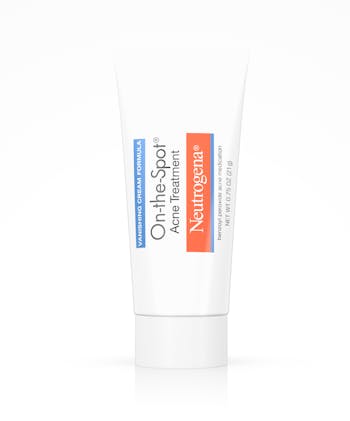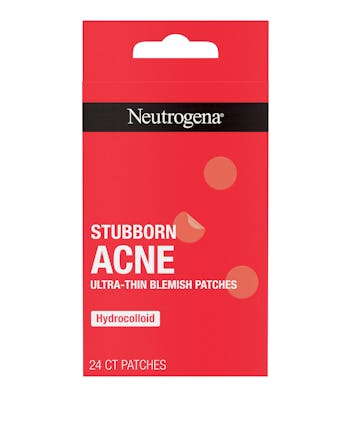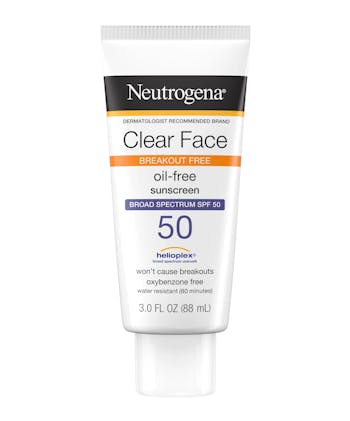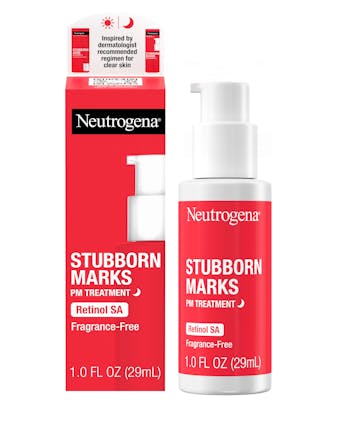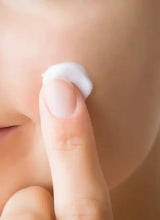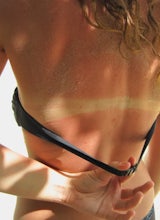All skin types are unique, including acne-prone skin. This means not all breakouts can be treated the same. Understanding the cause of your acne and your skin type is key to finding formulas that offer real results. After all, acne can be frustrating, but it doesn't have to be when you have the right products on your side.
And the good news is that personalized skincare is just a click away. Neutrogena Skin360® helps you zero in on acne solutions so you can get back to the smooth, clear skin you've been missing.
Before you get started, learn more about acne-prone skin and which products are best for banishing breakouts.
What Is Acne-Prone Skin?
You know what a breakout looks like, but what is acne-prone skin, exactly? Acne happens when the pilosebaceous unit (the hair follicle, hair shaft and sebaceous gland) becomes inflamed. This can happen to anyone sometimes. However, acne-prone skin types often produce excess sebum (oil), which can form a clog. This traps bacteria and causes inflammation, leading to blemishes.
If you battle breakouts, know you're not alone. Acne is the most common skin condition in the United States, affecting up to 50 million people every year.
Acne can occur at any stage of life, though it's typically associated with adolescents and young adults — around 85% of people ages 12 to 24 experience at least mild acne. But statistics show that adult acne is increasing, especially in women. In fact, one study showed that, out of 280 participants with adult acne, roughly 82% were women.
How To Know if You Have Acne-Prone Skin
Wondering if you fall under the acne-prone skin type or are simply experiencing a bout of breakouts? Here are some signs it's more than an isolated breakout:
Clogged Pores
Caused by oil, dirt and dead skin cell buildup, clogged pores often have a dark appearance and can become red and swollen.
Blackheads
When a clogged pore is exposed to air for some time, the oils become oxidized. These look black on the skin and may be slightly raised.
Redness
A common symptom of acne breakouts, redness can occur due to bacterial buildup and inflammation.
Recurring Blemishes
If your acne doesn't seem to resolve or returns regularly, it's likely more than an isolated breakout.
Oily Skin
Overactive sebaceous glands often cause clogged pores, which is why oily skin and breakouts often go hand in hand. You can also have dry acne-prone skin, but this skin type requires a different treatment approach.
Large Pores
Excess sebum production and stubborn breakouts can decrease your pores' elasticity over time, making them appear more prominent.
AM and PM Skincare Routine for Acne-Prone Skin
When it comes to how to create a skincare routine for acne-prone skin, the golden rule is consistency. Whether you're dealing with oily skin or dryness, sticking to a well-planned day and night regimen can help reduce breakouts and improve your skin's appearance.
Morning Routine
Cleanse
Cleansing helps clear pores and rinse away oil buildup. Choose a cleanser with salicylic acid, like Neutrogena® Oil-Free Acne Wash with Salicylic Acid, to help treat and prevent breakouts.
If you have dry or sensitive skin, try Neutrogena® Ultra Gentle Daily Cleanser with Pro-Vitamin B5 for Acne-Prone Skin, Fragrance-Free for a more gentle, nourishing approach to beating breakouts.
Treat
After patting your skin dry with a clean towel, apply a treatment designed to visibly reduce blemishes and signs of acne. For example, Neutrogena Stubborn Acne® AM Treatment contains 2.5% micronized benzoyl peroxide to lessen breakouts and redness.
Moisturize
Even oily skin benefits from the right moisturizer when managing acne. If your skin is too dry, it will produce more sebum to compensate, creating a vicious cycle. Try a moisturizer with salicylic acid, like Neutrogena® Non-Comedogenic Oil-Free Pink Grapefruit Acne Face Moisturizer with Salicylic Acid, to visibly reduce breakouts while leaving skin feeling nourished.
Apply Sunscreen
Always protect your skin with daily sunscreen. Neutrogena® Clear Face Break-Out Free Liquid Lotion Sunscreen Broad Spectrum SPF 50 is oil-free and non-comedogenic, designed to keep your pores clear while shielding your skin from the sun's harmful ultraviolet rays.
Evening Routine
Cleanse
Removing makeup, sunscreen, pollution and oil buildup at the end of the day can help reduce acne. Keep your nighttime routine simple with Neutrogena Stubborn Texture® Acne Cleanser for Textured Skin. This cleanser contains a custom acid complex to gently cleanse and exfoliate, leaving your skin visibly smooth.
Treat
Neutrogena Stubborn Marks® PM Treatment is powered by Retinol SA to visibly improve skin tone while you sleep. An effective part of a dermatologist-recommended skincare routine for oily and acne-prone skin, 88% of people saw an improvement in skin tone after just 12 weeks of use.
Moisturize
Give your skin the nourishing moisture it needs to repair overnight with fragrance-free Neutrogena® Ultra Gentle Face Gel Hydrator for Acne-Prone Skin. This lightweight gel formula provides healthy hydration without clogging pores for smooth, clear skin.
Personalize Your Journey to Clear Skin
Following a daily skincare routine, both morning and evening, is the best way to resolve stubborn breakouts. Take your skin type into account and experiment with the best acne-fighting products out there. Stick with it, and over time you'll notice visibly clearer, smoother skin. So, what are you waiting for?
FAQ
How often should you exfoliate acne-prone skin?
Gently exfoliate your skin up to three times per week unless it shows signs of irritation. Never exfoliate broken or irritated skin.
Is my skincare routine causing acne?
Using products with pore-clogging ingredients or without skin-clearing ingredients may lead to acne. The best skincare routine for acne-prone complexions is targeted and consistent.
What does acne-prone skin look like?
This skin type may appear red and inflamed and present various types of acne, including blackheads, blemishes and cysts.
Which skincare ingredients are best for acne-prone skin?
Ingredients that cleanse pores and increase skin cell turnover, like salicylic acid and retinol, are good for acne-prone complexions.
Can acne-prone skin be dry?
Yes! While many people who experience acne have oily skin, this skin type can also be dry or sensitive.



